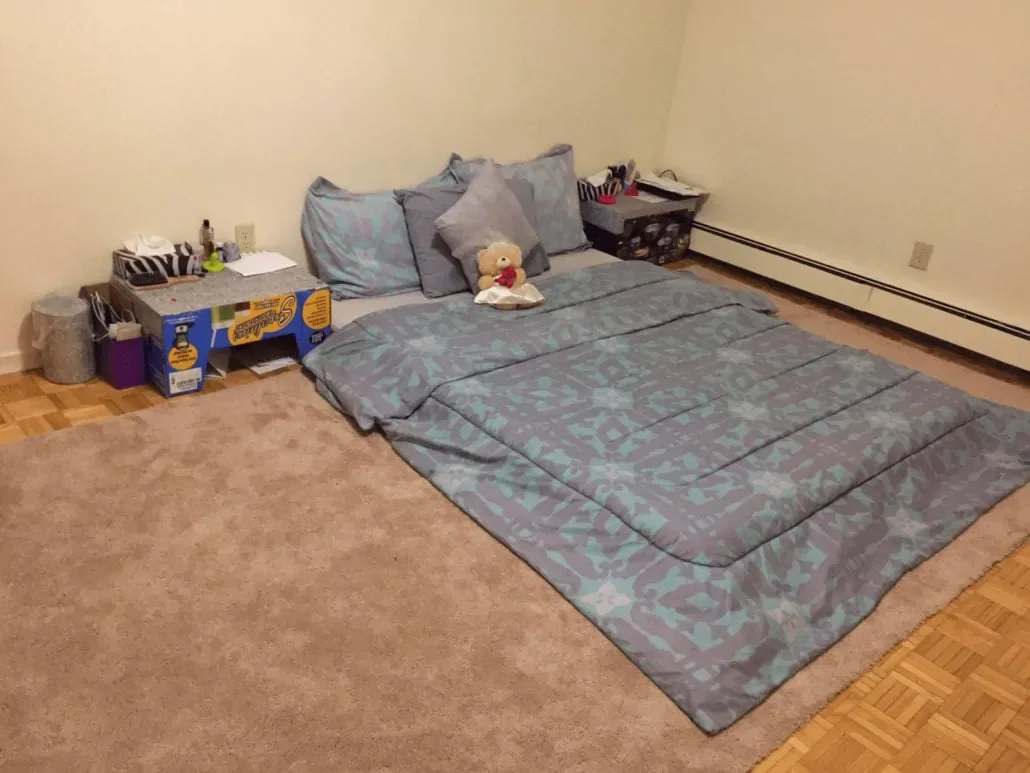
the hidden issue
of furniture poverty
The Furnish Together coalition defines furniture poverty as
The inability to access, afford, or maintain essential household furniture and goods for a functional, safe, and healthy home

In the United States, over 37 million people live below the poverty line, including more than 11 million children. While much attention is paid to access to food, shelter, and healthcare, one critical aspect of housing stability often goes unrecognized: furniture poverty.
A Country of Excess Meets a Crisis of Need
According to the EPA, over 12 million tons of furniture waste ends up in U.S. landfills annually - that’s the equivalent of over 24 billion pounds of tables, couches, beds, and chairs tossed aside.
At the same time, 32% of Americans - over 100 million people - are living in furniture poverty, meaning they lack essential items like beds to sleep on, tables to eat at, or dressers to store their belongings.
There is a disconnect:
Millions of usable furniture items are thrown away each year,
While millions of people go without the basic items that make a house a home.
At DIG, we step into the gap between waste and want.
Every couch, bed frame, and nightstand we save from the landfill becomes a building block of stability, dignity, and comfort for a neighbor in need.
Since our founding in 2020, DIG has:
Furnished homes for over 900 families in Central Pennsylvania,
Diverted more than 500,000 pounds of furniture from landfills,
Saved referring agencies and caseworkers thousands of dollars in emergency support,
And transformed empty spaces into true homes.
When we reuse what we already have, everyone wins:
people, planet, and community.
Furniture poverty describes the condition of living without essential household items like beds, tables, dressers, and cookware. Families emerging from homelessness, domestic violence, or crisis may secure housing, only to move into empty apartments with no means to make them livable. Children sleep on floors. Meals are eaten from laps. Dignity, safety, and comfort are compromised.
Despite the widespread nature of this issue, furniture poverty remains under-researched, under-recognized, and underfunded in the U.S. Unlike in the United Kingdom or Canada, where furniture poverty is increasingly acknowledged as a key indicator of housing instability, the United States lacks comprehensive federal or state policies that directly address this invisible crisis.
DIG is proud to be part of a growing coalition of furniture banks across the country working to change that. We’re sharing data, stories, and solutions to help establish furniture poverty as a recognized and measurable barrier to housing stability. Because housing isn’t truly a solution unless it includes the basic dignity of a bed to sleep in, a table to eat at, and a place to call home.
Furniture poverty affects more than twice as many Americans as food insecurity, yet the infrastructure to address it is nearly nonexistent.
While more than 60,000 food programs operate across the U.S. to serve the 15% of Americans experiencing food insecurity, there are only about 250 furniture banks nationwide working to meet the needs of the 32% of Americans living without essential furniture.
This graph highlights a broader truth: systems exist for some basic needs - like food - but not for others. Families escaping crisis, transitioning from homelessness, or trying to rebuild after domestic violence often find themselves in empty apartments with no beds to sleep on, no tables to gather around, and no way to afford the basics.
DIG and our partners across the country are working to bring attention to this overlooked crisis: advocating for investment, research, and infrastructure to close the gap and make housing truly livable.
when the need is great, but the response is small



